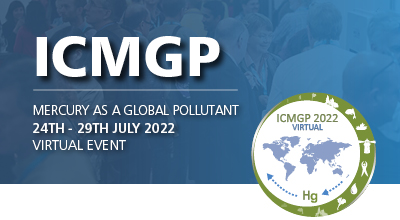| Abstract Title: | National Mercury Assessment – An Evaluation of the Effectiveness of Norwegian Mercury Regulations and Policies |
| Presenter Name: | Hans Fredrik Veiteberg Braaten |
| Company/Institution: | Norwegian Institute for Water Research |
| Session: | Special Session - Assessing the effectiveness of the Minamata Convention on Mercury under climate uncertainties |
| Day and Session: | Monday 25th July - Session Two |
| Start Time: | 0830 UTC |
| Co-Authors: | Hans Fredrik Veiteberg Braaten,Katrine Aspmo Pfaffhuber,Heli Routti,Helle Katrine Knutsen,Michael Bank,Oleg Travnikov,Joel Ormala,Caroline Enge,Cathrine Brecke Gundersen,Sabine Eckhardt,Kjetil T?rseth,Kristine Vejrup,Anne-Lise Brantster |
Abstract Information :
The National Mercury (Hg) Assessment in Norway evaluates the interconnectedness among: (a) national and regional Hg policies and regulations, (b) emissions, releases, uses and exposure pathways of Hg, and (c) concentrations of Hg in the environment, biota, and humans, measured during 2000-2020. Following increased knowledge and awareness of Hg pollution and its impacts, the use of Hg has been strictly regulated in Norway. When Norway ratified the Minamata Convention on Mercury, no changes were required in existing laws and regulations, as Norwegian legislation had stricter requirements. Our synthesis indicates that Hg in air and wet deposition in Norway are decreasing. The largest reduction in Hg emissions has been in the metal industry sector and these groups have been successful in utilizing and implementing technological solutions. Stricter environmental regulations, monitoring, and permitting have supported these successful Hg remediation efforts. The European continent is the primary source of anthropogenic Hg measured at Norwegian monitoring sites. Data on marine and freshwater fish and Arctic mammals showed that temporal Hg assessments are complex and species-specific. Post-depositional Hg processes are important to consider when identifying the causes of temporal changes. For example, Hg concentrations in polar bears and arctic foxes did not follow deposition flux rates or air concentrations of Hg, suggesting that multiple exposure regimes and several integrated processes are involved in Hg uptake and trophic transfer of Methyl Hg. Nonetheless, some datasets indicated that marine and freshwater fish species responded to spatiotemporal changes in Hg emissions at regional scales. Human biomonitoring data documented a decrease in blood total Hg in pregnant women and that these data were partially explained by reported number of dental amalgam tooth fillings. Blood Hg increased with maternal fish consumption, maternal age and education status and was higher in participants residing by the coast and in western Norway.



